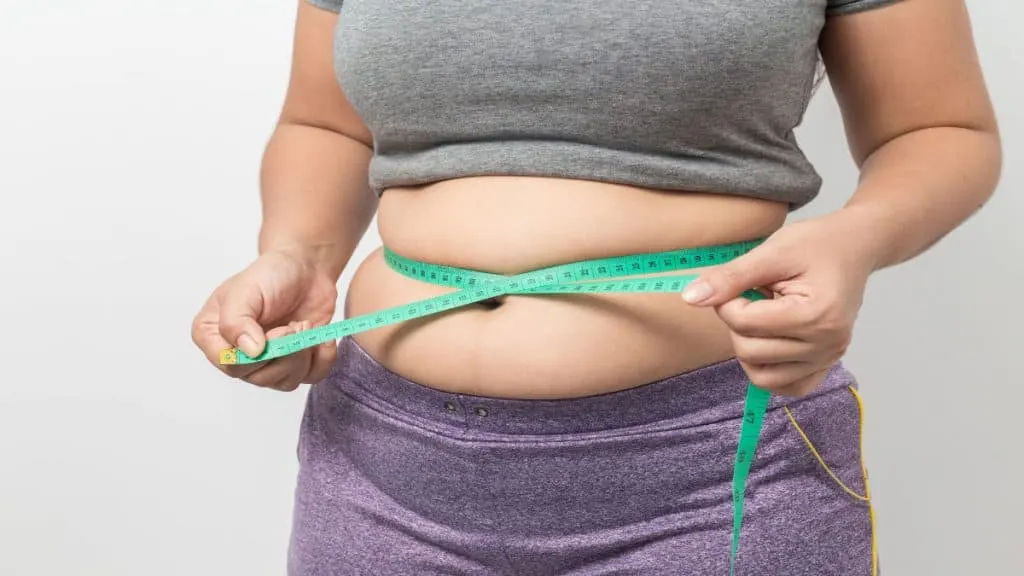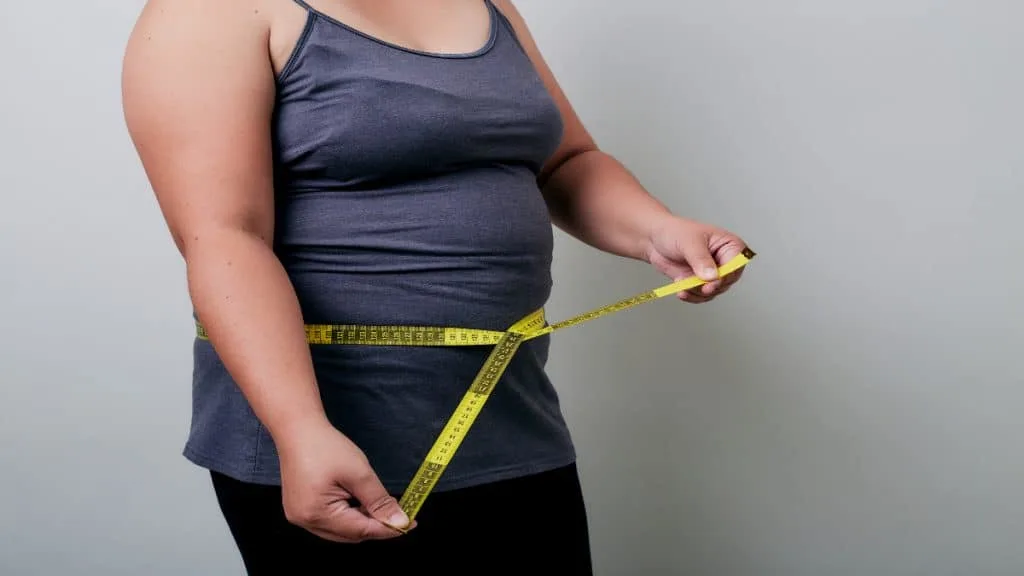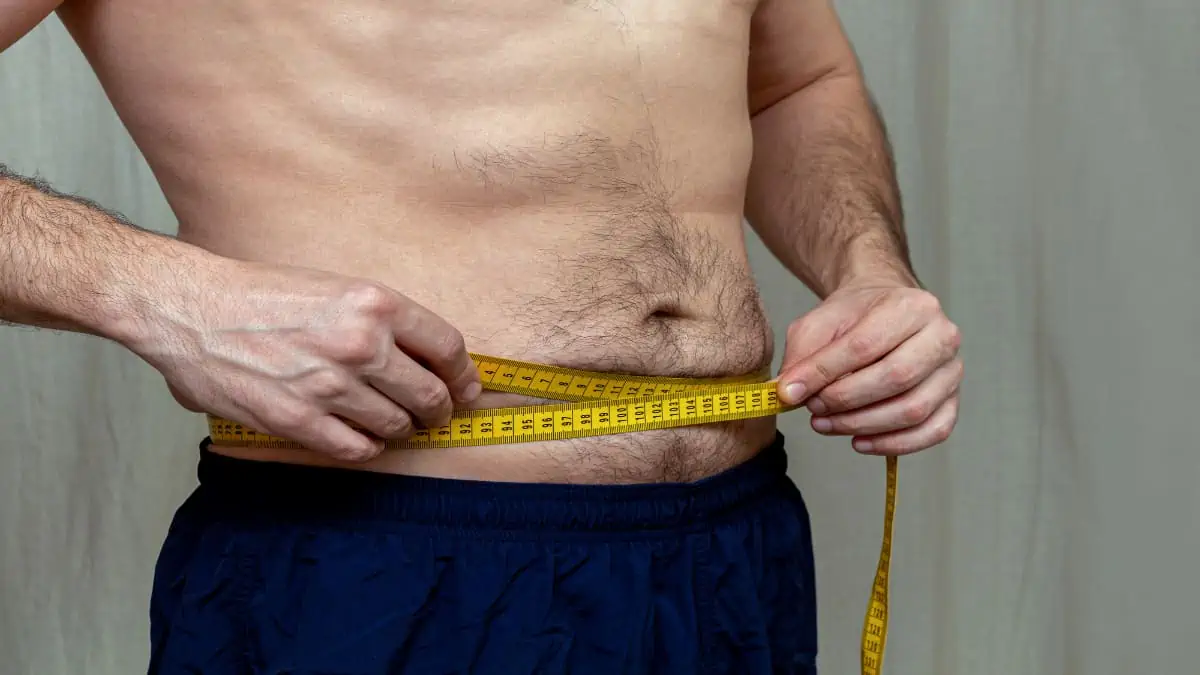Although it isn’t exactly small, 34 inches is still well below the average waist size for both men and women.
However, depending on your height, build, gender and body composition, your 34 inch waist might actually look considerably bigger or smaller than it actually is.
Keep reading to see how your 34 in waist stacks up, or check out our other articles below to compare your waistline to other common sizes.
Is a 34 inch waist fat for a woman?

Is a 34 inch waist fat for a woman or not? No, a 34 inch waist isn’t fat for a woman unless the female in question is really short. However, just because a 34″ waist isn’t fat for a woman doesn’t mean that it’s slim either.
A 34 in waist is indeed smaller than average for a woman, based on the data. But visually speaking, a 34 inch female waistline will still look a bit on the chunky side in most cases.
Based on the scientific research, a 34 inch waist is too big for a woman, even if it doesn’t necessarily look huge to the eye.
Experts recommend that a woman should keep her waist below 31.5 inches, so at a 34 inch circumference, [1] you need to lose a few inches of belly fat if you want to optimize this health status indicator (waist size is an indicator—not a guarantee—of your health status).
So, is a 34 inch waist small for a woman? No, it’s definitely not small. But it’s still smaller than average, which is something.
You should also factor your hip size into the equation because your waist-to-hip ratio (WHR) is an indicator of your health and attractiveness. [2] While not a guarantee of good health (especially with a 34″ waist), a WHR of less than 0.8 is considered healthy.
How big is a 34 inch waist for a man?

Is a 34 inch waist big for a man? No, a 34 inch waist is not big for the vast majority of men. A waist measurement of 34 inches is generally considered to be a medium size for males. However, unless you’re really tall, a 34 inch or a 34.5 inch waist definitely isn’t small, either.
On the other hand, if you’re short in stature, then your 34 inch waistline might actually be too big.
The reason for this is that scientists often advise keeping your waist size to less than half of your height. [3] So if you’re 5′8″ or shorter and you have a 34 in waist, then you should definitely lose some belly fat if you want to live in optimal health.
What does a 34 inch waist look like?

What does a 34 inch waist look like on men and women? The look of a 34 inch waist depends on your height, build, body fat level, and abdominal muscularity.
Let’s use a few examples to see what I mean.
If a person with a long torso and a person with a short torso both have a 34 inch waist, the person with the long torso will look like they have a smaller waist even though they don’t.
This illusion is due to the fact that when you have a long torso, your waist makes up a smaller portion of the surface area of your overall body/torso; hence, it looks slimmer.
Now, let’s take two people of the exact same height and torso length. The person with the more defined abs and lower body fat level will again appear to have the slimmer waist. This is because when you see visible muscles on the abs, you generally think that the waist is smaller.
Conversely, when you see a layer of fat over someone’s abs, you generally think that their stomach is larger than it is. Of course, this way of thinking is often inaccurate because having some stomach fat—in addition to being completely normal—doesn’t actually mean that you are fat.
Furthermore, building your abdominals and obliques can make your waist much thicker. After all, when you train any muscle, it’s bound to grow and develop.
Conclusion: Is it ok to have a 34 inch waistline?

Although your health isn’t measured in inches, the size of your waist is still a good indicator of your current health and a decent predictor of your future health.
And while it’s possible to look and feel great while being bigger than normal, there’s no denying that a 34 inch waist size is still too large for the vast majority of women to live in optimal health.
The good news is that at 34 inches, your waist is only marginally over the 31.5-inch upper limit for being considered low risk for various chronic diseases.
For a man, a 34 inch stomach is a medium size. The exception to this is if you’re short, in which case you should limit your waist size to no more than half of your height.
References
- Ardern, C. I., Janssen, I., Ross, R., & Katzmarzyk, P. T. (2004). Development of Health-Related Waist Circumference Thresholds Within BMI Categories. Obesity Research, 12(7), 1094–1103. https://doi.org/10.1038/oby.2004.137
- Singh, D., & Luis, S. (1995). Ethnic and gender consensus for the effect of waist-to-hip ratio on judgment of women’s attractiveness. Human Nature, 6(1), 51–65. https://doi.org/10.1007/bf02734135
- Browning, L., Hsieh, S., & Ashwell, M. (2010). A systematic review of waist-to-height ratio as a screening tool for the prediction of cardiovascular disease and diabetes: 0·5 could be a suitable global boundary value. Nutrition Research Reviews, 23(2), 247-269. doi:10.1017/S0954422410000144

